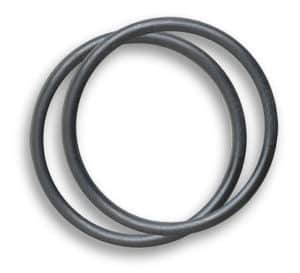Neoprene O-Ring (Chloroprene Rubber) Material Description
 Chloroprene (CR), also known by its trade name “Neoprene”, was one of the first successful synthetic elastomers in 1931 made by DuPont. It is prepared by emulsion polymerization of chloroprene, or 2-chlorobutadiene.
Chloroprene (CR), also known by its trade name “Neoprene”, was one of the first successful synthetic elastomers in 1931 made by DuPont. It is prepared by emulsion polymerization of chloroprene, or 2-chlorobutadiene.
Neoprene is a multi-purposed elastomer which yields a balanced combination of properties. Neoprene o-rings are typically seen in the refrigeration sector, as they demonstrate remarkable resistance to chemicals such as ammonia and a variety of coolants.
Neoprene o-rings also perform well in contact with oils and many chemicals and has good resistance to sun, ozone and weather. The material displays outstanding toughness and good resistance to fire.
Neoprene o-rings typically are black in color, with a shelf life of 15 years.
Additional information regarding applications, advantages, limitations, and more can be read in our All About Neoprene O-Rings article.
Cure System: Sulfur-Cured
Standard neoprenes are metal oxides and organic accelerators.
Neoprene O-Ring Temperature Range:
Standard Low Temp: -40°C (-40°F)
Standard High Temp: 100°C (212°F)
SPEC SHEET: Chloroprene Rubber (CR) 70 Durometer
SHOP FOR NEOPRENE O-RINGSProduct Inquiry
Preferred Environments to Use Neoprene O-Rings
Performs Well In:
- Refrigerants
- Ammonia
- Water
- Silicone grease and oils
- High aniline point mineral oil
Doesn't Perform Well In:
- Aromatic hydrocarbons
- Ketones
- Esters
- Ethers
- Strong oxidizing acids
- Chlorinated hydrocarbons

 English
English  Español
Español  Français
Français  Português
Português  Deutsch
Deutsch  Italiano
Italiano  Русский
Русский  中文
中文  日本語
日本語  العربية
العربية  हिन्दी
हिन्दी